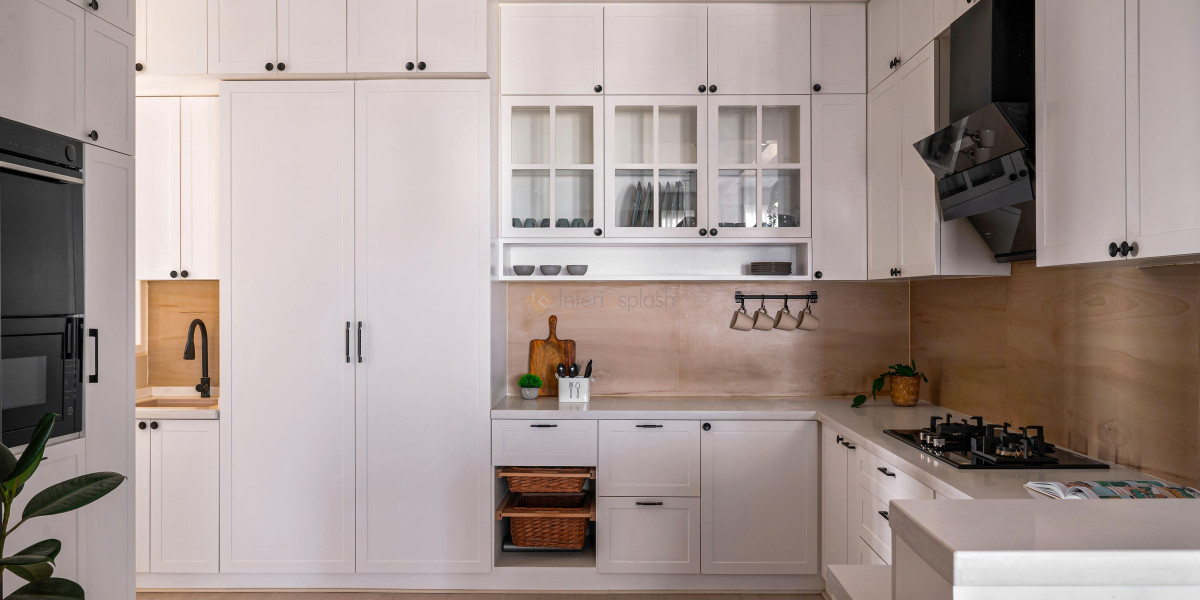As the world of interior design continues to evolve, professionals in the field are constantly embracing new trends that enhance functionality, aesthetics, and sustainability. For interior designers in Bangalore, staying updated with the latest trends is essential to meet the changing needs of clients. In 2024, home interiors are all about creating spaces that are not only visually stunning but also practical, eco-friendly, and reflective of personal style. This article dives deep into five design trends that are taking the industry by storm, and why every designer is talking about them.
1. Sustainable Design
Sustainability has become more than just a buzzword in interior design—it's now a central focus. With increasing awareness of environmental impact, clients are seeking eco-friendly options that reduce waste and energy consumption.
Why Sustainability is Trending
Sustainability is no longer an option but a priority. Interior designers are incorporating green practices to meet the growing demand for eco-conscious living spaces. Here’s why:
- Eco-friendly materials: Designers are sourcing materials that are sustainable, such as reclaimed wood, recycled metal, bamboo, and cork.
- Energy efficiency: Homes are being designed with energy-efficient lighting, appliances, and systems to reduce carbon footprints.
- Biophilic design: Bringing nature indoors through plants, natural lighting, and organic materials not only promotes wellness but also supports sustainable practices.
- Low-impact finishes: The use of low-VOC paints, non-toxic finishes, and environmentally safe adhesives is gaining traction.
How to Incorporate Sustainable Design
Interior designers can easily incorporate sustainability by:
- Recommending energy-efficient appliances and smart home technologies.
- Selecting furniture and decor made from recycled or upcycled materials.
- Using sustainable textiles like organic cotton, hemp, or linen.
- Integrating indoor plants and natural elements into home interiors.
2. Minimalism with a Twist
Minimalism has been a dominant trend for years, but in 2024, interior designers are adding a twist—warm minimalism. This version of minimalism blends the clean lines and uncluttered look with warmth, comfort, and texture.
The Appeal of Warm Minimalism
Traditional minimalism can sometimes feel cold or impersonal, but the new take on this trend emphasizes:
- Soft textures: Think cozy wool throws, plush cushions, and soft area rugs.
- Neutral color palettes: Warm neutrals like beige, taupe, and cream create a more inviting atmosphere.
- Natural materials: Wood, stone, and organic fabrics are key to adding warmth to minimalist interiors.
- Subtle decor: While minimalism is still about keeping things simple, a few well-chosen decor pieces add personality and warmth.
Bringing Warm Minimalism to Life
Interior designers can infuse this trend into homes by:
- Choosing furniture with clean lines but in warmer materials like wood or leather.
- Incorporating soft furnishings like woolen throws, linen cushions, or jute rugs.
- Using a neutral color palette but adding warmth with deeper tones like warm grays, terracotta, or soft browns.
- Including functional yet aesthetically pleasing storage solutions to maintain the uncluttered look.
3. Maximalist Expressions
On the opposite end of the spectrum, maximalism is also making a bold comeback. Where minimalism focuses on simplicity, maximalism is about abundance—bold colors, rich textures, and a mix of patterns.
Why Maximalism is Gaining Popularity
Clients looking to express their individuality and personality are embracing maximalism. This design trend encourages:
- Vibrant colors: Maximalism celebrates the use of bright, bold colors like emerald green, sapphire blue, and deep purples.
- Layered patterns: Mixing patterns such as florals, stripes, and geometric designs adds depth and complexity to a room.
- Eclectic furniture: Unique, vintage, or statement pieces are key in maximalist design.
- Personalized decor: The focus is on showcasing personal collections, travel mementos, and art pieces to create a curated and lived-in feel.
How Interior Designers Can Embrace Maximalism
To successfully incorporate maximalism into home interiors, designers should:
- Encourage clients to choose bold wall colors or vibrant wallpapers.
- Mix and match different patterns while ensuring they complement each other.
- Layer textures like velvet, silk, and brocade to add richness and visual interest.
- Focus on creating a space that feels curated, not chaotic, by balancing bold choices with thoughtful placement.
4. Smart Home Integration
Technology is rapidly transforming home interiors, and smart home integration is a trend every interior designer is talking about in 2024. From automated lighting to voice-controlled systems, smart homes are not just a luxury—they’re becoming a standard feature in modern designs.
The Benefits of Smart Home Design
Smart home technology offers numerous benefits that make homes more efficient and user-friendly:
- Convenience: Automated systems allow homeowners to control lighting, temperature, and security with a touch of a button or a voice command.
- Energy efficiency: Smart thermostats, lighting systems, and appliances help reduce energy usage.
- Customization: Smart homes can be tailored to the individual preferences of the homeowner, providing a personalized living experience.
- Increased home value: Homes equipped with the latest smart technology tend to have higher market value.
How to Incorporate Smart Technology
Interior designers can integrate smart home features by:
- Working with technology experts to seamlessly install smart lighting, thermostats, and security systems.
- Designing spaces that accommodate hidden wiring and technology integration without compromising aesthetics.
- Recommending smart appliances and entertainment systems that enhance functionality without sacrificing style.
- Educating clients on the latest smart home products that align with their lifestyle and design preferences.
5. Multifunctional Spaces
With more people working from home, multifunctional spaces have become a top priority in home interiors. Interior designers are being tasked with creating spaces that serve multiple purposes while maintaining a cohesive design.
The Rise of Multifunctionality
Homes are now expected to be more than just living spaces—they need to accommodate:
- Home offices: Designated areas for remote work with ergonomic furniture and proper lighting.
- Flexible rooms: Spaces that can easily transition from a guest room to a workout area or a home office.
- Storage solutions: Hidden or integrated storage to maximize space without cluttering the design.
- Entertainment zones: Combining living rooms with entertainment systems or media rooms to make the most of space.
How Designers Create Multifunctional Spaces
Interior designers can design multifunctional spaces by:
- Incorporating fold-away furniture, like wall-mounted desks or convertible sofas.
- Creating open floor plans that allow for easy reconfiguration of spaces.
- Installing custom storage solutions like built-in shelves or under-bed storage.
- Designing rooms with flexible layouts that can be adjusted according to the homeowner’s needs.
Conclusion
As we move through 2024, these five design trends—sustainable design, warm minimalism, maximalism, smart home integration, and multifunctional spaces—are dominating the world of interior design. Interior designers are incorporating these trends into home interiors in Bangalore, creating spaces that are not only visually striking but also functional and sustainable. By staying ahead of these trends, designers can continue to deliver innovative and tailored solutions for their clients, enhancing both the aesthetic and practical aspects of modern living.



